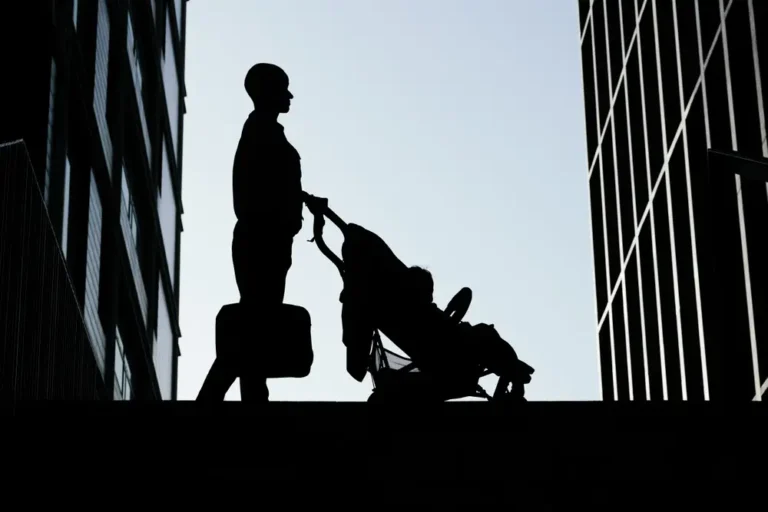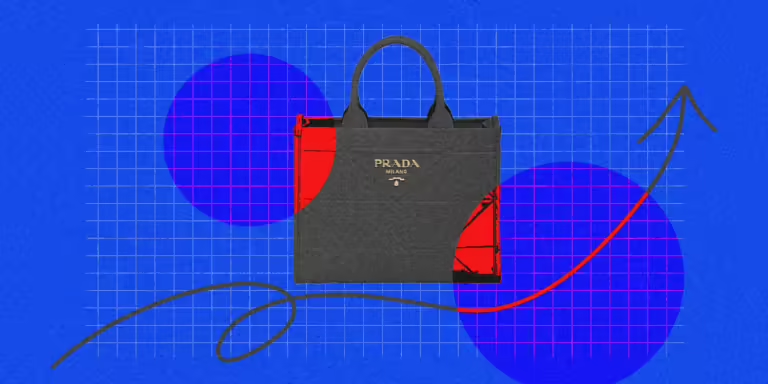Flash mob summer: How can retail theft stampedes be stopped?

When brazen groups of thieves dressed all in black and wearing hoodies sprinted into the Nordstrom at Topanga Mall, the Yves Saint Laurent store at Americana on Brand in Glendale, and a pop-up Gucci store at South Coast Plaza, startled employees and shoppers immediately dialed 911.
It didn’t come soon enough.
Stealth planning, disguises, ransacking speed – the thieves are in and out in two to four minutes – and multiple car getaways mean that even a quick law enforcement response can be ineffective.
Since early July, flash mobs of thieves have committed dozens of heists in high-end and other stores throughout Southern California, prompting officials to form a task force focused on cell tower dumps, surveillance video, and other high-tech tools.
Arrests are beginning to be made. However, reversing the trend may take more time.
“A lot of this stuff happens on social media, and that’s how they coordinate.” “A lot of these people don’t even know each other,” said Adam Bercovici, owner and CEO of Titan National Consulting Group and a former Los Angeles police lieutenant. “That’s essentially why it’s a flash mob: ‘be here at this time…'”
According to Deputy Chief Kris Pitcher, Los Angeles police are investigating 21 flash mob thefts in Los Angeles County in collaboration with other local, state, and federal agencies. Other flash mobs, also known as “flash robberies” by police, have occurred in neighboring counties.
“They come in groups of 10 to 40 people and completely overwhelm the store,” Pitcher explained. “You won’t get any pushback when you present those figures.” Nobody wants to be hurt. They do it quickly, overwhelm the situation, and take all of the high-end goods.”
In most cases, Los Angeles police believe gang members, whether from a single gang or from multiple gangs, are banding together to commit massive, visible retail thefts, according to Pitcher.
In other cases, teenagers and young adults are looting stores in search of items to keep, according to Bercovici. However, thefts involving groups of teenagers have generally targeted smaller businesses such as 7-Eleven or AMPM convenience stores, according to Pitcher.
Concerned shoppers: ‘It’s nerve-racking’
Officials said that the largest flash mob robberies occurred on August 8 at the Americana on Brand in Glendale and on August 12 at the Topanga Mall in Canoga Park, where groups of thieves stole an estimated $300,000 and $100,000 in designer handbags and other merchandise, respectively.
Other flash mobs have appeared since then in Los Angeles, Orange, and Riverside counties, primarily targeting high-end chain stores in malls.
On Aug. 16, a group of five to ten people rushed into a temporary Gucci store at South Coast Plaza in Costa Mesa and stole approximately $100,000 in merchandise, according to police.
In the Inland Empire, Riverside police asked the public for assistance in identifying suspects who stole “several thousand dollars’ worth of designer handbags” from the Nordstrom Rack store at the Canyon Springs shopping center between July 10 and August 16.
However, according to the National Retail Federation, when it comes to targets for organized retail crime, high-end stores with luxury items are in the minority.
“(Organized retail crime) groups also target everyday consumer goods,” said David S. Johnston, the federation’s vice president of asset protection and retail operations, in a video about retail crime. “They prefer goods with a higher resale value that are less expensive.”
Some then sell the stolen goods to individuals or a group known as a “fence” by law enforcement via online marketplaces, swap meets, or seemingly legitimate businesses, according to CHP officials. Buyers may or may not be aware that the items they are purchasing are stolen.
Some shoppers are on edge following the recent flash mob thefts.
“When I’m shopping, I’m aware of everything around me,” said Rose Smith, 66, a Topanga Mall customer. “It’s terrifying. It’s terrifying.”
Alya Khalid, a South Coast Plaza shopper, said she saw some of the region’s flash mob robberies play out on TikTok, with groups of up to 50 robbers tearing through high-end stores. “It’s crazy how they got away,” she exclaimed.
Khalid, 32, said she noticed the increased security presence at South Coast Plaza a few days ago and it made her feel safer.
“There’s always the possibility that they’ll return,” she said.
However, the possibility of a flash mob appearing unexpectedly will not necessarily change shopping habits.
“It’s really rare,” said Joseph Saad, 42, a Topanga Mall shopper. “You’ve got to keep your head on a swivel these days.”
“People are doing this because they are starving and want what they can’t have,” he added. “I don’t think there’s anything that can be done about the robberies.”
Officials are making an effort.
On August 17, city and county officials in Los Angeles announced the formation of a task force comprised of 22 full-time officers from across the city. County, who has access to a wide range of law enforcement resources, including the California Highway Patrol’s retail theft unit.
In a written statement the same day, Orange County District Attorney Todd Spitzer blamed “the inept and lax policies championed by the state Legislature and other elected officials like Mayor Bass and Los Angeles County District Attorney George Gascon,” citing “decriminalization, decarceration (sic), and zero bail,” which he said emboldens criminals. Neither official appears to have responded publicly.
Spitzer issued another statement two weeks later, this time including smash-and-grab robbers, saying he would “thoroughly investigate and prosecute smash and grab to the fullest extent of the law,” including pursuing life sentences for six defendants accused of holding customers and employees at gunpoint while stealing more than $87,000 in items from The Jewelry Exchange in Tustin in April 2022.
Gascon called flash mobs “outrageous” and harmful to the entire community, not just their immediate victims, just days before the task force was formed.
On August 24, task force officials made 11 arrests in connection with four flash mob investigations. Pitcher stated that as of Sept. 1, the task force had made 15 arrests, all of which resulted in felony filings by the DA’s office.
The following week, CHP officials announced two arrests and the seizure of nearly $200,000 in stolen merchandise from Victoria’s Secret and CVS stores throughout the greater Los Angeles area by targeting a location in downtown Los Angeles where stolen merchandise was being sold.
Who is reselling the merchandise?
Despite the summer heat, organized retail theft is not a new phenomenon in Southern California.
Bercovici, a 30-year LAPD officer who retired as a lieutenant in 2012 after serving as officer-in-charge on several task forces, said he’s worked numerous organized theft cases involving Colombian and South American theft gangs.
He is now the owner and CEO of Titan National Consulting Group, which provides expert testimony or expert witness on a variety of subjects, including security and law enforcement use-of-force.
The difference between the flash mobs studied by Bercovici and his team and today’s is that much of the organization is done through social media.
“What we’re seeing now is size-coordinated, spontaneous efforts because of social media and other messaging apps that allow for quick communication,” Bercovici explained. “That’s very different.”
According to Pitcher, social media does play a role, but “it doesn’t necessarily drive it.”
LAPD has dealt with groups of high school students overwhelming convenience store clerks for several years, but these flash mobs are well-planned and organized, according to the department.
“They’ve cased it out, looked at it, and they’re getting it over with quickly,” Pitcher added. “It’s different from the thrill of doing it for public consumption.”
Retail crime syndicates target items that are difficult to track and easily resold. Tide detergent, baby formula, cosmetics, Louis Vuitton handbags, and vitamins, which were once hawked at flea markets or street corners, are now fenced online by gangs to raise money for their activities, according to Rachel Michelin, president and CEO of the California Retailers Association.
“What we are seeing is more sophistication,” Michelin stated. “We’re seeing a lot more recruiting; they’re recruiting street gangs and homeless people.” They’ll pay them $100 to go in and steal.”
Pitcher said that in many cases, the suspects, who were almost always wearing hoodies and masks, were in and out in two to four minutes. Police are also learning that the majority of the getaway vehicles are either rented under fictitious names or “cold plated,” which means they have license plates that don’t match the vehicle’s registration, most likely because a thief stole a license plate from another car.
While stores may have security guards, according to Bercovici, there isn’t much those guards can do legally.
“A security guard’s job has always been to observe and report,” explained Bercovici. “A use of force must be justified in order to protect yourself or someone else.”
Bercovici and Pitcher advise store employees, customers, and security guards caught up in a flash mob to “be good witnesses,” rather than getting in the way or preventing any thieves from fleeing.
Officials stressed that the thieves are there for the property and, as Bercovici put it, “don’t want to get into it with anyone, either.”
Sgt. Jim Kelley, who has been with the CHP’s Organized Retail Crime Unit since its inception in 2019, agreed that those who are in a store when a flash mob occurs should get as far away from it as possible and avoid engaging with any of the criminals.
“You never know what the thief has in mind, or what they’ll do to get away,” he explained.
According to Marcie Fedor, her son used to work at the Abercrombie & Fitch store in South Coast Plaza. He’d been trained to “stand back” and not touch any robbers during a heist, she explained.
“It’s true, it’s best to keep employees safe by telling them not to interfere,” she explained. “But it’s still frustrating to watch that and be powerless to intervene.”
Officials do advise being observant and paying attention to details to assist investigators. Those who see thieves fleeing should look for license plates and vehicle descriptions.
A quick police response, according to Glendale Police Chief Manuel Cid, prevented a group of about 12 people wearing hoods, masks, and gloves from breaking into a Gucci store at Americana on Brand on Aug. 2, six days before a flash mob flooded the Yves Saint Laurent store in the same shopping center, fleeing in a dozen vehicles, many of which had no license plates.
Glendale police said five suspects in the Yves Saint Laurent case had been arrested.
“There needs to be a lot more resources and something you can dedicate 24/7 from the time of the occurrence until you follow these individuals,” Pitcher said. “Everything you can get out of technology will lead us to these suspects.”
Finding out where the items are being sold, whether online or on the street, or locating the person sending the message on social media, according to Bercovici, is critical to determining who is involved.
“You’re going to have to grab some people and get them to roll over on each other,” he predicted. “In my experience, even with the spontaneous nature of these crimes, someone is still coordinating this stuff.” You must determine who is currently moving the material.”
Kelley, whose team is collaborating with local law enforcement agencies on some of the cases, said agencies are doing their best to combat “a ton of retail theft going on…They’re doing everything they can to combat it, short of sitting outside the store every day the store is open.”
High-tech and low-tech strategies
Retailers were hard hit even before the flash mob wave, according to Johnston of the Retail Federation.
According to the most recent National Retail Security Survey, shoplifting, theft, and organized retail crime will cost the country $94.5 billion in 2021, with organized retail crime accounting for nearly half of that total.
To combat thieves, retailers are increasingly using high-tech, low-tech, and no-tech methods such as next-generation video surveillance systems, facial-recognition cameras, license-plate readers, radio-frequency identification tags, case locks, increased training, and increased security.
They have also advocated for legislation to increase theft penalties and make it easier for law enforcement to share information.
During an earnings call, CEO Dave Kimbell of Ulta Beauty, which had 1,355 stores in 50 states as of this year, including 168 in California, told analysts that theft had increased and that crimes had become more violent and aggressive.
To prevent theft, Ulta is increasing staffing, hiring more security, and utilizing in-store fixtures. Fragrances, a popular target for thieves, will be placed in locked cabinets at 70% of Ulta’s stores nationwide by the end of the year, said Chief Operating Officer Kecia Steelman during the call.
“We’ve invested in security guards, including armed security guards in some areas.” “We’re working with our landlords to see what we can do to help police the parking lots and deter people from coming in,” Steelman said. “It’s like a full-court press out there.”
Some perfumes were recently seen in locked plastic cases at Ulta Beauty in Menifee. According to Menifee police Capt. Dave Gutierrez, the store has been able to reduce thefts.
Police said they had success catching thieves at a similar store in the region without the locked cases after shopping center management installed cameras in the parking lot. And some of the merchandise is equipped with an anti-theft device that beeps and then sends an alarm if the product is concealed and moves.
Because some flash mobs have been so successful, Kelley believes that others will at least try.
“People are thinking of different ways to do it,” he explained. “When people see a successful tactic, they copy it or do what the other guy is doing.”
“Ultimately, these guys get caught,” Kelley added. “They’re always doing it. It’s just a matter of how many times this happens before they’re discovered.”






